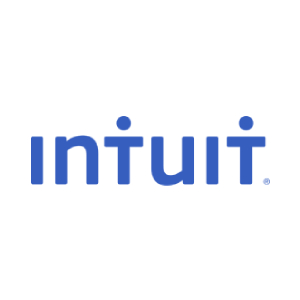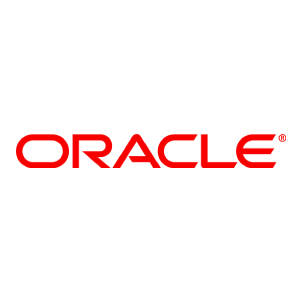
“Once again Saltmarch has knocked it out of the park with interesting speakers, engaging content and challenging ideas. No jetlag fog at all, which counts for how interesting the whole thing was."
Cybersecurity Lead, PwC

In Machine Learning and Data Science, choosing the right tools is essential for efficient workflows and reproducible results. DVC 3.0's release has been a focal point in recent discussions, especially with its promise to tackle some persistent challenges in the ML community. But as we delve deeper, it's essential to view DVC 3.0 in the broader context of the ML tool ecosystem, informed by insights from the ML community.
Traditional version control systems, designed primarily for code, often struggle when it comes to managing large datasets and model binaries. This limitation has made it challenging for practitioners to efficiently track and manage different versions of datasets and models, leading to fragmented workflows and reduced reproducibility.
DVC 3.0's Approach: DVC 3.0 addresses this by launching ML experiments. This functionality empowers users to run, track, and compare various experiments smoothly, avoiding overburdening their Git repositories. With enhanced tracking granularity, the DVC 3.0 release notes indicate users can return to any experiment stage, enhancing transparency and manageability of the process.
Alternatives in the ML Ecosystem: The ML community's discussions underscore a plethora of tools tailored for specific ML workflow requirements. Examples include:
The array of tools, including DVC 3.0, exemplifies the dynamic and adaptive nature of the ML tool ecosystem. Each tool presents its strengths, addressing the distinct challenges ML practitioners face.
Visualizing experiments, especially when there are numerous parameters and metrics to consider, can be a complex task. The intricacies of ML models and the vastness of data make it imperative to have a platform that can present results in an intuitive and comprehensible manner.
DVC 3.0's Approach: Addressing this, DVC 3.0 has seamlessly merged with Iterative Studio. This union transcends mere visualization, crafting a holistic environment for ML professionals. Iterative Studio presents a space where experiments are vividly displayed, parameters adjusted, and outcomes methodically analyzed. With an all-inclusive view of every experiment, it facilitates effective comparisons, trend discernment, and well-informed decision-making.
Diverse Visualization Tools in the ML Arena: Community dialogues frequently spotlight the myriad visualization tools and their adaptability to varied workflows. Highlighted tools include:
The emphasis across discussions is clear: while visualization is crucial, the ability to integrate seamlessly with existing workflows and tools is equally vital. The ideal platform is one that offers robust visualization capabilities without compromising on flexibility.
Machine Learning projects are inherently different from traditional software development. While both involve code, ML projects also encompass vast datasets, intricate models, and a myriad of hyperparameters. The dynamic nature of ML, with constant tweaks to data and models, necessitates a robust versioning system. Traditional Git, designed primarily for code versioning, often falls short when it comes to the multifaceted demands of ML projects.
DVC 3.0's Approach: DVC 3.0 has risen to this challenge by enhancing its integration with Git. This deepened integration means that while Git continues to handle code, DVC manages datasets and models, ensuring that both are versioned in tandem. The result is a more intuitive model management system that respects the nuances of ML workflows. It allows for tracking changes, rolling back to previous versions, and maintaining a clear record of the experimentation journey.
Model Management: Tools in the Spotlight: The discussions within the ML community highlight a range of tools and platforms that cater to the unique demands of ML model management. Some of the notable mentions include:
The sentiment echoed across community discussions is the need for tools that offer robust model management capabilities but remain flexible. The goal is to have platforms that can be easily integrated into diverse workflows, ensuring that ML practitioners have the freedom to choose the best tools for their specific needs without feeling constrained.
The cloud has revolutionized the way we approach Machine Learning and Data Science. With the promise of virtually unlimited resources, the cloud offers scalability and flexibility that local environments can't match. However, this boon comes with its set of challenges. Managing cloud resources, optimizing costs, and ensuring that experiments run smoothly without interruptions can be daunting tasks. Moreover, the diverse range of cloud providers, each with its unique offerings and pricing models, adds another layer of complexity.
DVC 3.0's Approach: Recognizing the pivotal role of the cloud in modern ML workflows, DVC 3.0 introduced Cloud Experiments. This feature is designed to streamline the process of running experiments in the cloud. By integrating seamlessly with popular cloud providers, DVC 3.0 allows practitioners to offload compute-intensive tasks to the cloud, all while maintaining a consistent workflow. The integration ensures that data, models, and experiments are synchronized, reducing the overhead typically associated with cloud-based ML workflows.
Navigating the Cloudscape: Tools in Focus: The vibrant discussions within the ML community bring to light several tools that cater to the challenges of cloud-based experimentation. Noteworthy among them are:
The cloud's potential in ML is undeniable, but harnessing its power requires tools that are both robust and intuitive. The community's discussions emphasize the need for solutions that simplify cloud management while offering the flexibility to adapt to the ever-evolving cloud landscape.
The Challenge: Hyperparameters play a pivotal role in determining the performance of Machine Learning models. While the right set of hyperparameters can lead to highly accurate models, the wrong choices can result in subpar performance. Given the vast search space, manually tuning hyperparameters can be akin to finding a needle in a haystack. Automating this process is crucial, but it's equally important to ensure that the tuning process is transparent, reproducible, and trackable.
DVC 3.0's Approach: Addressing this challenge head-on, DVC 3.0 has integrated with Optuna, a popular library designed for hyperparameter optimization. Optuna's approach is both systematic and efficient, utilizing techniques like Bayesian optimization to search the hyperparameter space. With DVC's integration, users can not only automate the tuning process but also version the results, ensuring that every experiment is trackable. This integration aims to make the hyperparameter tuning process as seamless as possible, allowing ML practitioners to focus on model development rather than the intricacies of tuning.
Hyperparameter Tuning Tools: Ray Tune vs. Optuna: The ML community's discussions often revolve around the best tools for hyperparameter tuning, and a recurring theme is the Ray Tune vs. Optuna debate. Both tools have their proponents, and the discussions shed light on their unique strengths:
The choice between Ray Tune and Optuna often boils down to specific project needs and personal preferences. While some practitioners prioritize scalability and distributed capabilities, others value simplicity and ease of integration.
Insight: Hyperparameter refinement remains a cornerstone in the ML workflow, and tool selection can profoundly sway the outcome. Be it DVC's alliance with Optuna, Ray Tune's scalability, or any alternative tool, the spotlight remains on automation, replicability, and traceability.
The Challenge: In the world of Machine Learning and Data Science, data is the lifeblood. However, as datasets grow in size and complexity, managing them becomes a challenge. Often, practitioners find themselves pulling vast amounts of data, much of which might not be immediately relevant to their current experiment. This not only consumes valuable time and bandwidth but also clutters the workspace, making it harder to navigate and manage.
DVC 3.0's Approach: Recognizing the inefficiencies in traditional data management practices, DVC 3.0 introduced a feature that allows users to pull only the data they need. This selective approach ensures that workspaces remain clean and that only relevant data is fetched, saving both time and computational resources. By integrating this feature with its versioning capabilities, DVC ensures that users can seamlessly switch between different datasets as needed, without the overhead of managing vast amounts of unnecessary data.
Surveying the Data Management Horizon: The discussions within the ML community highlight that while DVC's approach is innovative, there are other tools in the landscape that address data management challenges:
The sentiment across community discussions is clear: while efficient data management is crucial, flexibility is equally important. ML practitioners value tools that can be integrated into their existing workflows without imposing constraints, ensuring that they have the freedom to choose the best solutions for their specific needs.
Insight: Data management is a cornerstone of effective ML workflows. As datasets continue to grow, tools that offer efficient and flexible solutions will be indispensable. Whether it's DVC's selective data pulling feature, Pachyderm's versioning capabilities, or any other tool, the emphasis is on streamlining data management without compromising on flexibility.
Machine Learning is rapidly evolving, bringing both opportunities and challenges. As the complexity of our models and datasets increases, there's a clear need for tools that make the ML workflow more efficient. DVC 3.0, with its range of features and integrations, is one such response to these challenges. But the broader ML landscape shows that there are many tools, each addressing different aspects of the workflow.
Discussions within the ML community highlight a common goal: the desire for powerful tools that are also adaptable. This ensures that practitioners can fit their tools to their needs, rather than the other way around. As the field continues to grow, the emphasis will be on tools that meet current needs while being flexible enough to adapt to future challenges.
Have questions or comments about this article? Reach out to us here.
Banner Image Credits: Attendees at Great International Developer Summit

“Once again Saltmarch has knocked it out of the park with interesting speakers, engaging content and challenging ideas. No jetlag fog at all, which counts for how interesting the whole thing was."
Cybersecurity Lead, PwC

“Very much looking forward to next year. I will be keeping my eye out for the date so I can make sure I lock it in my calendar."
Software Engineering Specialist, Intuit

“Best conference I have ever been to with lots of insights and information on next generation technologies and those that are the need of the hour."
Software Architect, GroupOn

“Happy to meet everyone who came from near and far. Glad to know you've discovered some great lessons here, and glad you joined us for all the discoveries great and small."
Web Architect & Principal Engineer, Scott Davis

“Wonderful set of conferences, well organized, fantastic speakers, and an amazingly interactive set of audience. Thanks for having me at the events!"
Founder of Agile Developer Inc., Dr. Venkat Subramaniam

“What a buzz! The events have been instrumental in bringing the whole software community together. There has been something for everyone from developers to architects to business to vendors. Thanks everyone!"
Voltaire Yap, Global Events Manager, Oracle Corp.